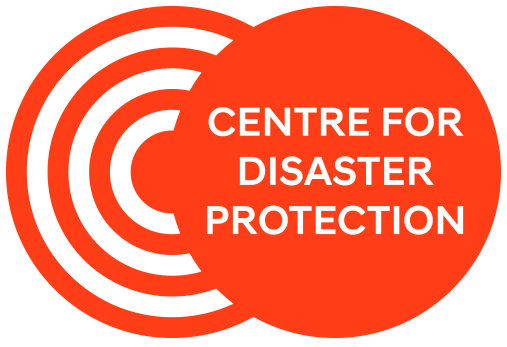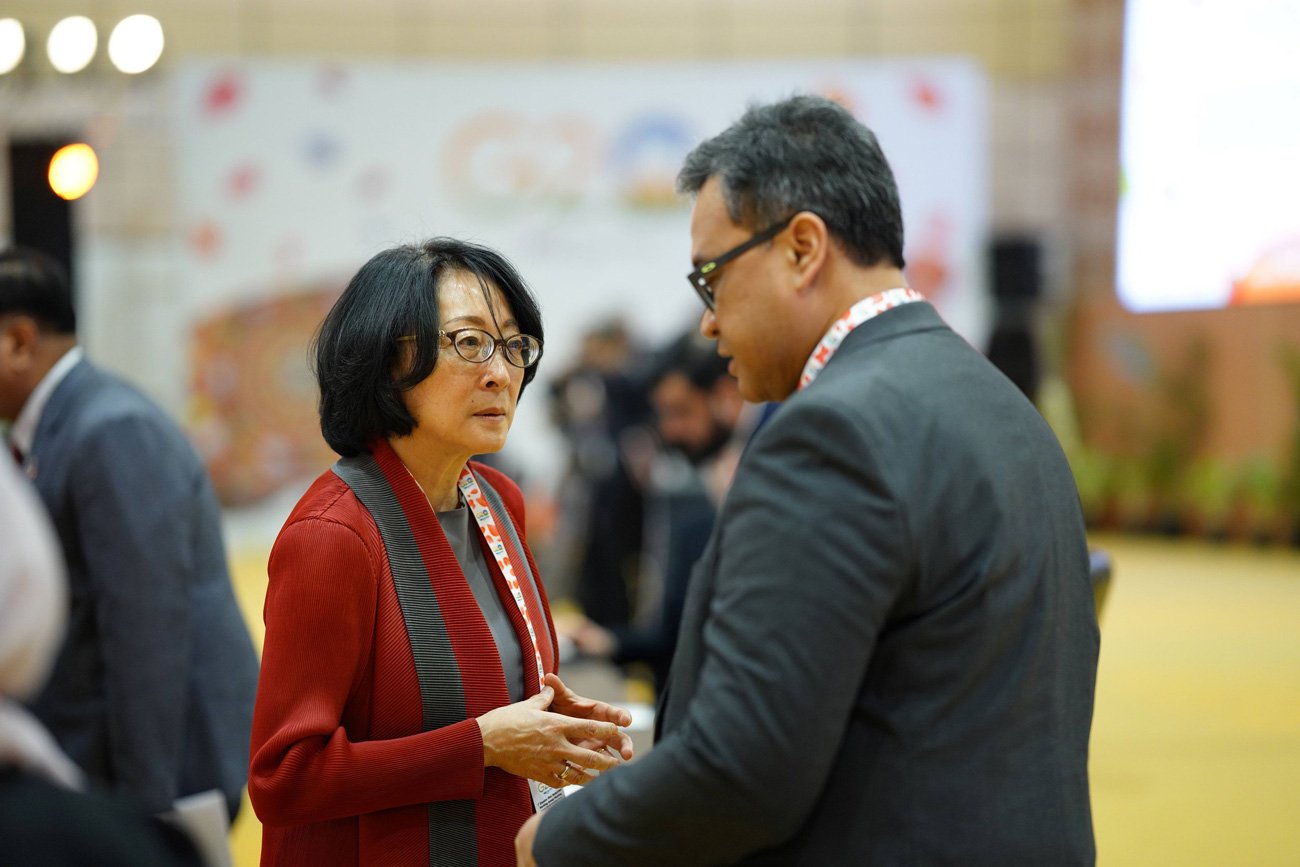The language of collaboration: Why disaster risk finance matters for the G20 – and why the G20 matters for disaster risk finance
Author: Anna DeGrauw
Photo: Mami Mizutori, Special Representative of the U.N. Secretary General for Disaster Risk Reduction at the inaugural G20 DRR Working Group meeting in Gandhinagar, India. Credit: UNDRR
In this blog post, Anna DeGrauw, Policy and Strategic Partnerships Officer, explores the synergies between disaster risk finance and disaster risk reduction within the UN frameworks and the importance of the G20’s role in advancing this joint agenda.
In comprehensive disaster risk management, disaster risk reduction (DRR) and disaster risk finance (DRF) are two sides of the same coin. While DRR reduces the risk of disasters occurring, DRF works to provide financial protection for residual risks or risks too large to reduce completely.[1]
Despite their complementarity, DRF has never been explicitly referenced in UN General Assembly frameworks on disaster management, such as the comprehensive Sendai Framework for Disaster Risk Reduction 2015-2030 (Sendai Framework) – a major agreement of the post-2015 development agenda integrated with the Sustainable Development Goals – or the 2005 Hyogo Framework for Action, which the Sendai Framework supersedes.
UN frameworks play a crucial role in influencing policy priorities for disaster risk management. They focus on reducing risk factors and preparing for response and recovery. Although the frameworks reference DRF ‘money-in’ instruments, such as insurance, and ‘money-out’ mechanisms, such as DRF-linked adaptive social protection, the G20 has an opportunity to support greater alignment between the DRR and DRF agendas.
Why should the G20 care about disaster risk finance?
As the events of recent years have shown, disaster risk should be a political priority for the G20. For example, six of the top 10 most disaster-affected countries are G20 members. Producing 80 percent of the world’s GDP, home to 60 percent of the world’s population, and emitting 75 percent of the world’s greenhouse gases, G20 countries also experience the greatest asset losses from disasters.
As a pivotal intergovernmental forum engaging heads of state and with a mandate to “shape and strengthen the global architecture and governance on all major international economic issues,” the G20 is well placed to also drive the DRF agenda.
There’s already momentum for a more equitable and crisis-ready global financial system. Recent agendas include the V20 Accra-Marrakech Agenda and Bridgetown Initiative 2.0, as well as tentative steps outlined in the World Bank Evolution Roadmap and UNFCCC and COP28 processes, which address unavoided and unavoidable climate risks resulting in losses and damages. Leadership from the G20 would help to convene UN and non-UN system agendas, in addition to advancing the DRF agenda. However, it is crucial for the G20 governance structure to include more climate-risk countries in working group meetings, many of which are leading these agendas.
How can specific language in the G20 shape the disaster risk financing agenda?
Even if not legally binding, G20 communiques can help to establish norms for DRF practices and set a precedent of agreed language. Pre-agreed language in international agendas demonstrates political commitment, helps interpret legally binding agreements, and supports negotiations.
Figure I shows that UN frameworks on disaster risk management incrementally build on pre-agreed language. References and definitions to disaster management established by the UN General Assembly in the 1994 Yokohama Framework either remained or were expanded in following Hyogo and Sendai Frameworks. For example, the 1994 Yokohama Framework mentions “disaster management” and “disaster reduction,” which eventually became the language we use today on “disaster risk management” and “disaster risk reduction” in the Hyogo and Sendai Frameworks. Similarly, references to money-in mechanisms, money-out mechanisms, and risk transfer either remained consistent or were expanded from preceding UN frameworks. In this small sample of disaster risk terminology, once a reference is included in a UN Framework, it often stays. However, there is currently no precedent in international frameworks that strategically and explicitly align DRF and DRR, which gives incredible potential to the G20 to do so.
Figure 1: DRF references in international Agendas
What is the G20 already doing and what can we expect from this?
Coinciding with the Midterm Review of the Sendai Framework, in 2023, during India’s G20 presidency, a new dedicated G20 Working Group on Disaster Risk Reduction was created. The Working Group prioritises early warning systems, resilient infrastructure, national DRR financing frameworks, disaster response systems, and eco-system-based approaches. Critically, the upcoming Brazilian and South African G20 presidencies have also signalled their commitment to continue the G20 DRR Working Group.
During a series of working group meetings, the G20 DRR Working Group negotiated and agreed on three targeted deliverables: (1) to contribute to agreed language on DRR and signal political commitment in an Outcome Document and Chair Summary (2) outline a roadmap with key objectives and actions for the next working group, and (3) a set of good practices in areas like early disaster response, resilient infrastructure, and shock-responsive social protection in a compendium of good practice.
Although DRF has been referenced before in the 2012 G20 Communique under Mexico’s Presidency, the G20 DRR Outcome Document and Chair Summary are significant because it recognises that more can be done on an institutional level to align DRF and DRR. For example, it states that although investment in prevention and DRR is important, “measures to address residual risk will always be necessary and should be strengthened.” It also calls for G20 countries to develop new or strengthen existing national financing strategies that build synergies between DRF and DRR in a risk-layered approach.
Further, the Outcome Document emphasises that DRF and pre-arranged finance help provide quick and targeted support through mechanisms such as insurance, contingent credit, and shock-responsive social protection made in collaboration with climate-vulnerable countries while also recognising barriers to action, such as debt burdens, in accessing DRR financial instruments.
In conclusion, Communiques and Outcome Documents bear significant influence, not only on national agendas within G20 countries but also on the potential evolution of international collaboration beyond the Sendai Framework. G20 leadership could pave the path towards reformed disaster risk management, especially as a new working group begins.
[1] According to the Centre for Disaster Protection, disaster risk finance covers the system of budgetary and financial mechanisms to credibly pay for a specific risk before a potential shock. This can include paying to prevent and reduce disaster risk, in addition to preparing for and responding to disasters.


